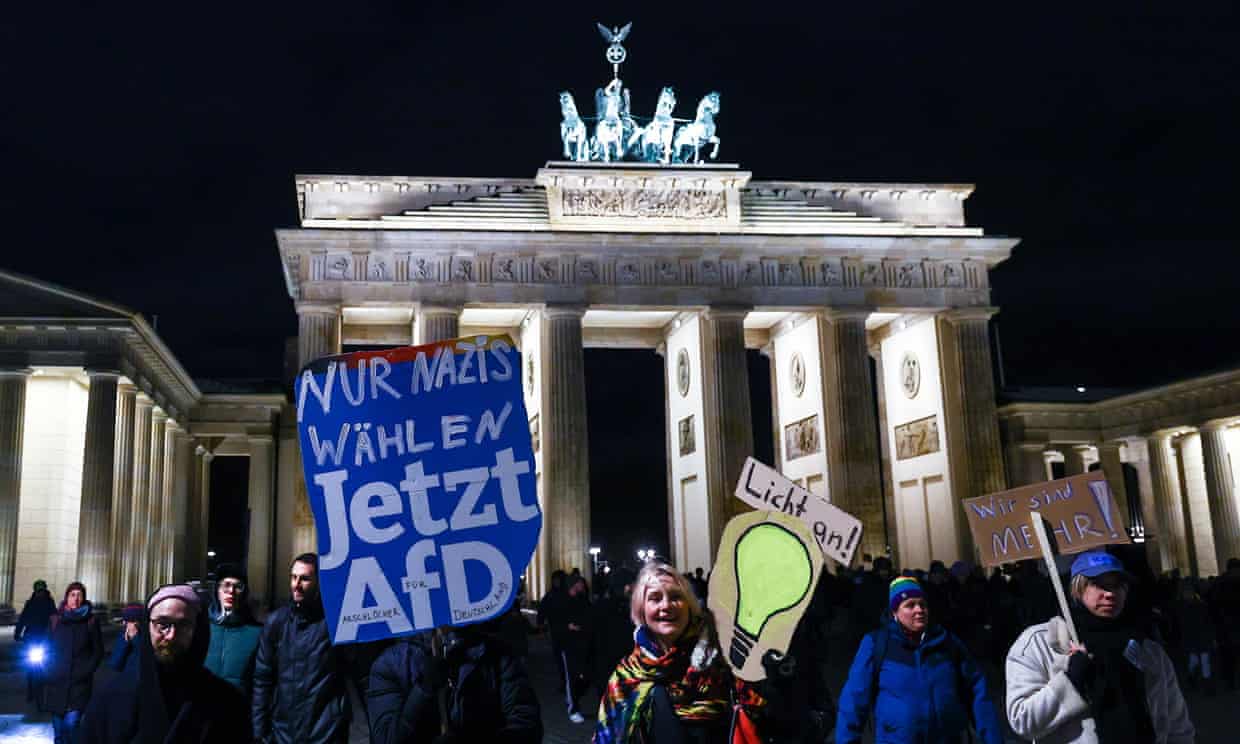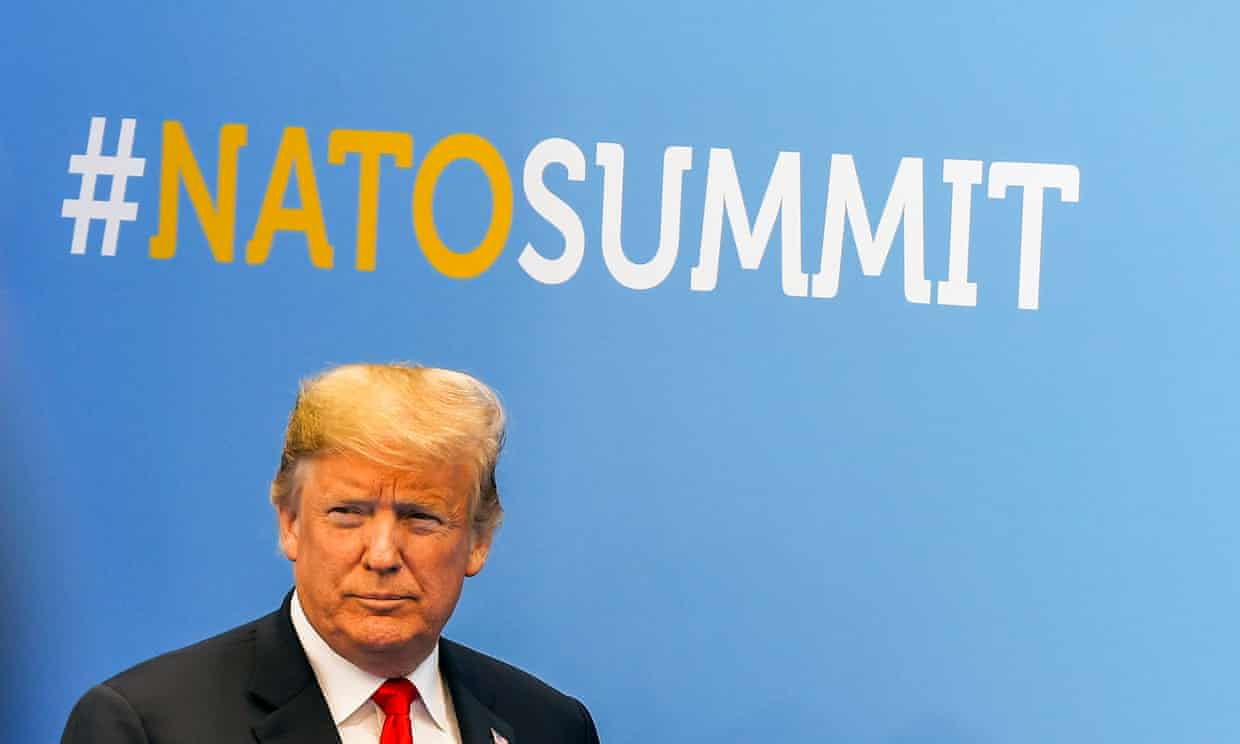If you thought his first term was bad, brace for a White House that abandons Ukraine, emboldens Putin and encourages the far right
As Donald Trump romps to the Republican nomination for the next presidential race, there is justified anxiety among the US’s European allies about his return to the White House. It is all but certain that 2024 will see a rerun of Joe Biden v Trump. Europe needs to prepare for the possibility of a second Trump presidency.
The last one was traumatic for Europe. This was not really for policy reasons. There were policy divisions such as Trump’s withdrawal from the Iran nuclear deal. But transatlantic policy tensions are hardly new: there have been times – the US-led war in Iraq in 2003 for example – when the rift was deeper.
Europe’s trauma had more to do with politics: Trump was the first American president not to treat Europe as family. He visibly felt more comfortable with authoritarians such as Xi Jinping and Vladimir Putin than with Europe’s democratically elected leaders.
Trump’s antipathy towards Europe has not changed. Second time around, these bad political vibes would probably translate into much greater policy chasms. Whereas his first term was internally erratic and largely ineffective, with frequent resignations and oscillations, a second could be more coherent and determined. Rather than diverse strands of the Republican party together in an unwieldy coalition, Trump 2.0 would be 100% Maga (Make America Great Again). He would not limit himself to unpleasant tweets.
Add to this, an international context that is far more challenging. Europe is deeply shaken by two wars, one of them on the continent itself. Neither Russia’s invasion of Ukraine nor war in the Middle East have any end in sight. In fact, the possible return of Trump may be among the reasons driving Putin and Benjamin Netanyahu to prolong their wars. After November, Europe’s strategic predicament could be worse than the dire one we have today.
What might Trump 2.0 imply for Europe? On the economy and the Middle East, differences would intensify. Transatlantic relations have not been easy since Biden’s Inflation Reduction Act, or what is viewed by many as his free pass to Israel’s war in Gaza. But with Trump, things would almost certainly deteriorate.
It is likely he would U-turn radically on Ukraine. He has threatened to drop Kyiv overnight, unless it accepts a “peace” struck by Washington (likely on Moscow’s terms). Deal or no deal, it is difficult to see Trump keeping up US military aid to Ukraine. Abandoning Ukraine would probably embolden Moscow further, raising the Kremlin’s level of imperial ambition in Ukraine and beyond. If Putin believes that Trump would not lift a finger to stop him, he could go as far as threatening Nato.
A second Trump presidency could also undermine American democracy, perhaps fatally. With four criminal indictments weighing on him, Trump would move against the judiciary, further undermining its independence. He would probably make good on his threats to go after those he considers traitors, with the risk of unleashing a 21st-century version of McCarthyism.
Picking up where he left off in 2020, Trump might go further in weakening the already frail multilateral order, starting with the UN. A democratic winter in the US would not remain confined to American borders, but reverberate across the world, starting with Europe.

This would dovetail with the risk of a rising far right that could materialise in the European elections in June. Populist rightwing forces in Europe today are bad enough. Yet Biden in the White House – and a disastrous Brexit – have acted as constraints, moderating many of their excesses. Few if any of these parties today calls for their countries to exit the EU. When those such as the Alternative für Deutschland in Germany float the idea of a referendum on quitting the EU, they are largely dismissed. Hard-right governments such as Italy’s have so far toed the line both on cooperation within the EU and on support for Ukraine.
Yet how would such governments and movements act if they were emboldened by electoral triumphs at home and Trump in Washington? It is possible, if not probable, that their masks would come off.
So what can we do to get Trump-proofed? On Ukraine, the answer is fairly straightforward. Much has already been done to narrow the gap between aid provided by Washington and by European governments. Today, Europe gives about twice as much as the US does, counting both military and economic aid. This is still not enough. Europe has a year to fill the shortfall that would result if the US abandons Kyiv. And this would still be barely enough. If the aim is to support Ukraine to win the war, weapons and ammunition production will have to be ramped up to replenish supplies. Europe will have to make strategic investments too in drones and satellites, do more joint training and improve its logistics planning.
Beyond Ukraine, the defence implications of Washington signalling a reduced commitment to Nato are immense. Europeans need to confront the reality that their continent is at war. The fighting today is in Ukraine but could spread beyond it in the coming years. If Europe is to face the threat Putin represents alone it will need to start putting flesh on the bones of a European pillar in Nato. An EU-UK defence agreement would also fit into this framework.
Propping up liberal democracy and multilateralism is just as important. The EU should strengthen its rule of law conditions (not weaken them as it has done to win over Victor Orbán’s Hungary). It should make no discounts on the political conditions that are required of new member states. Unlike during the first Trump presidency, when Europe indulged in the magical thinking that it could work with China to strengthen multilateralism, it must now double down on relationships (both bilateral and multilateral) with like-minded liberal democracies (Japan, South Korea, Australia and Canada) and countries from the global south in Africa, Asia and Latin America. This will be an uphill struggle, given the dramatic weakening of Europe’s credibility in the eyes of much of the world for its complicity with the war in Gaza.
It makes sense for Europe to do all of the above in anticipation of a possible Trump comeback. But it should act regardless. Even worse than doing nothing over the coming year would be scrambling to react in a divided and chaotic manner if the worst fears are realised. That would be seized on by Trump as proof that his bullying works.
-
Nathalie Tocci is a Guardian Europe columnist
Do you have an opinion on the issues raised in this article? If you would like to submit a response of up to 300 words by email to be considered for publication in our letters section, please click here.
